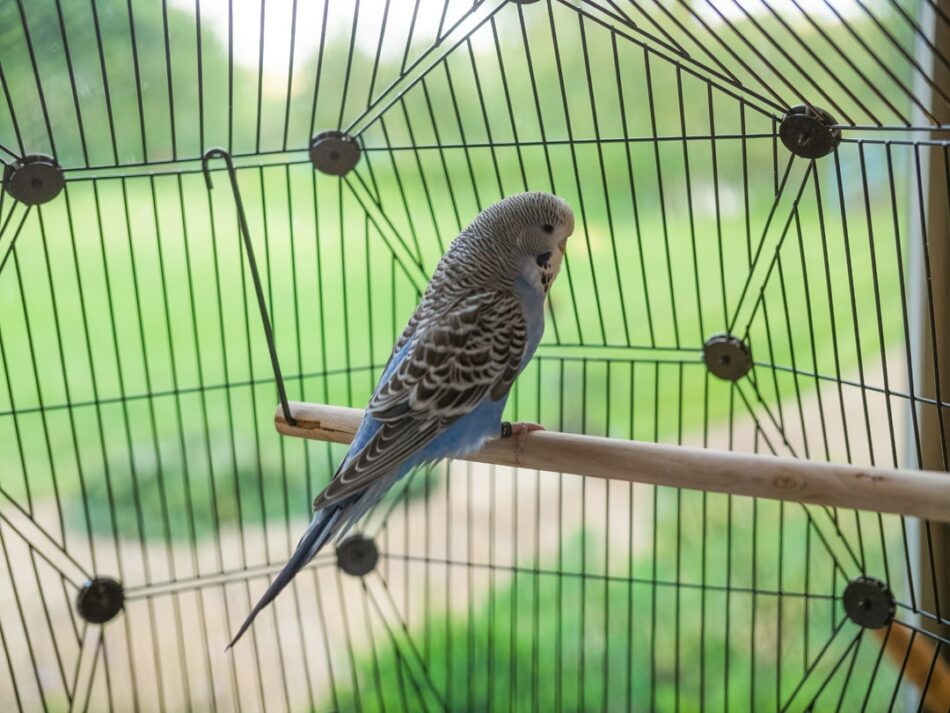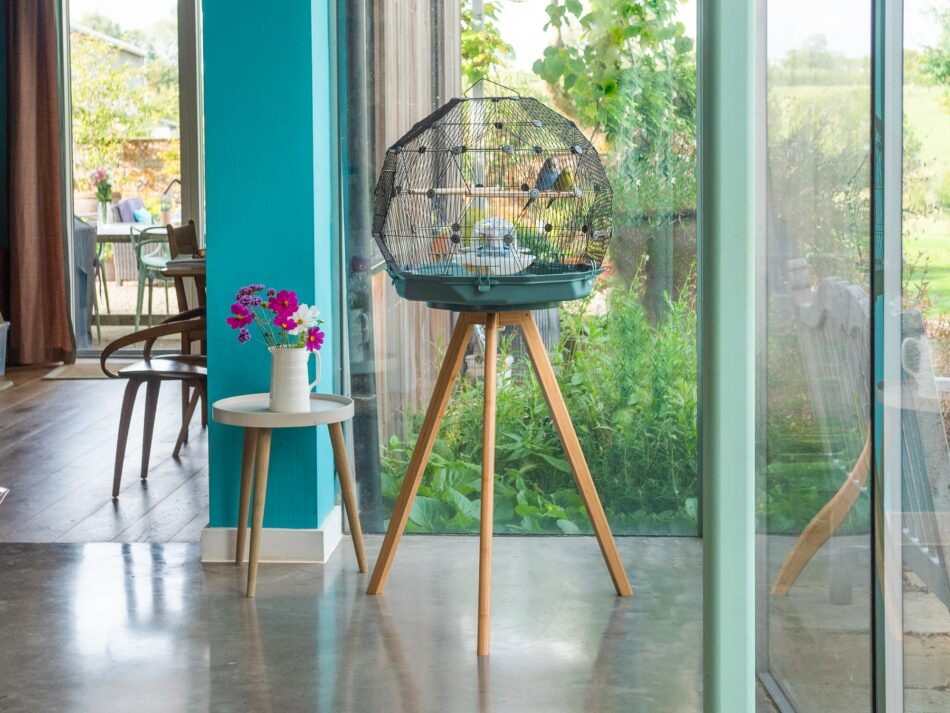How to care for a budgie
When you know how to care for a budgie, they make wonderful pets. Not only will their beautiful plumage brighten up any room, but they’re also very intelligent and sociable — developing strong bonds with their owners. Like with all pets, however, they come with responsibilities, and it is now your job to make sure they stay healthy and happy.
Diet and basic needs
Your budgies should consume the nutritional equivalent of what they would eat in the wild. The basis of their diet should be a good quality seed mix, and they should always have access to water and a cuttlefish bone. Offer leafy greens and herbs to provide vitamins and minerals a few times a week. Feed fruit as a treat no more than once a week, as these foods are high in sugar. Food and water containers must be refilled every day, and washed weekly.
Twice a year your budgies will moult, which means their plumage will gradually fall out and grow back. To help them stay healthy during this time, it’s important that they get extra moulting vitamins in their water.
Like most pets, budgies appreciate routine. Try feeding and letting them out of their bird cage around the same time every day. If you choose to use a bird cage cover at night time, it’s best to do this every day. This way the budgies will be able to anticipate the activity around them and feel comfortable in your presence – effectively minimizing stress and anxiety.
Enrichment and entertainment
Budgies are very social pets, and it’s always best to keep them as a pair – preferably siblings of the same sex who are used to living together. If you just want one budgie, you will need to act as its friend and companion, and can expect to spend a lot of time with them.
Most budgies like to bathe in a bird bath. The main purpose of a bird bath is to clear dust and sand from their feathers and to cool off. Even if your budgies don’t have these daily requirements, most budgies enjoy splashing around in the water. If you don’t have a bird bath in their cage, you can put a bowl of water in the room where the budgies are given flight permissions. It’s important to change the water as soon as it gets dirty in any bird bath.
If your pet doesn’t seem interested in a bath, an alternative is a budgie shower. Hang some wet leaves (lettuce, basil and parsley are favourites) in the cage, and watch your budgie run through them.
Budgies should be offered the opportunity to fly freely (but supervised) outside of their cage every day for at least 45 minutes. Ideally, budgies should be able to have multiple hours outside of their cage. Make sure the room is budgie-proofed before you let your pets out. Close windows and doors, block off fireplaces, turn off fans and air conditioners and keep other pets out of the room.
Check your cage
Check your budgies’ cage weekly to see that everything is in place and nothing has broken. Perches must be kept clean and functional. Bird toys are great for mental stimulation, as they encourage physical exercise and help wear their ever-growing beaks down. Change up your budgies’ toys every now and then to keep them interested. You don’t have to buy new toys all the time, but rotating through your budgies’ toys with the occasional new toy will help add variety to their environment. Your budgie’s environment is a crucial element in keeping them healthy and happy.
Health checks
Budgies’ beaks and nails grow constantly throughout their lives, so it’s important that they have access to toys to grind them down. In most cases you will need to trim the nails when they get too long, so make sure to purchase a pair of clippers made specifically for this task.
Budgies are very good at hiding pain and illness, and you’ll need to give them regular health checks. When you get to know your budgie, it’ll be easier to recognize when they aren’t feeling their best.
Signs of illness in budgies include:
- Changes in weight
- Discoloured feathers
- Reduced interaction with humans and toys
- Crusty nostrils
- Loss of feathers around the eyes or face
Another way of spotting early signs of illness is to regularly check your budgie’s droppings. The disposable paper liners in the Geo bird cage make it easy to monitor your pet’s health. When you do your weekly clean, check the amount, colour, and texture of the droppings. They can vary somewhat depending on what your budgie has been eating, but all faeces should be firm, with the urea (liquid portion) transparent and clear. If you notice changes or have other reasons to suspect that your budgie might be ill or in pain, contact your veterinarian. Make sure to find a vet that is experienced with birds – ideally before you bring your budgie home so you know who to contact if something goes wrong.
Omlet and your budgies
We’ve thoughtfully created the best bird cage for your budgies. The Geo Bird Cage has everything you need to make caring for your budgie easy, and to give them the perfect home. Customize their cage with bird mirrors and budgie perches to give them exciting ways to entertain themselves inside of their home. And with an optional bird cage stand and customisable cage colour options, your birds and their cage will both be a beautiful addition to any room.
This entry was posted in Budgies

